Hi guys, I'm creating mini reviews for hardware like the Bosch Performance Line CX that is shared across many electric bikes. This tactic allows me to go deeper, make updates in one place vs. having details spread out across reviews potentially going out of date, and it aggregates your excellent comments and input to be shared more effectively. There are variations in implementation, which I'll highlight back in the full ebike reviews on EBR.
One of the first Bosch Performance Line CX motors that I saw in the wild was on the Haibike XDURO DWNHLL Pro in 2016. It offered several important benefits compared with the original Performance Line Cruise motor and older First Generation Bosch Centerdrive as well as competing Yamaha, Impulse, Bafang, Shimano, and Brose products. Some of the main benefits include:
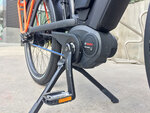
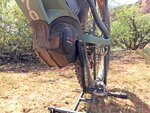

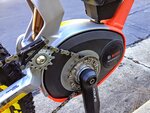
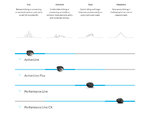
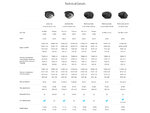
This review is still in the works, I invite your input below to make this as comprehensive as possible.
One of the first Bosch Performance Line CX motors that I saw in the wild was on the Haibike XDURO DWNHLL Pro in 2016. It offered several important benefits compared with the original Performance Line Cruise motor and older First Generation Bosch Centerdrive as well as competing Yamaha, Impulse, Bafang, Shimano, and Brose products. Some of the main benefits include:
- Raw torque power, the Bosch Performance Line CX motor can deliver up to 75 newton meters of torque in the highest levels of assist, this enough to climb very steep terrain as long as you shift into lower gears. By comparison, the Active Line delivers 40nm, the Active Line Plus delivers 50nm, and the Performance Line Cruise and Speed deliver 63nm
- Efficient power use, mid-drive electric bike motors tend to be more efficient than hub motors because they can leverage a cassette, internally geared hub, or continuously variable transmission, in the same way that a rider does. If you shift to lower gears, it will climb without using as much energy... and if you shift to higher gears, it will maintain speed without using as much energy
- High pedal cadence support, the Bosch Performance Line CX motor can support up to 120 RPM, which means that you can spin quickly without losing a sense of power, it's particularly useful for mountain biking when you downshift going into a steep climb, without the 120 rotations per minute, you could end up struggling to climb and going very slow. By comparison, the Active Line delivers 100 RPM, and the Active Line Plus delivers 105 RPM, all Performance Line drive units deliver 120 RPM
- Fast to respond, the Bosch motor controller measures rear wheel speed, pedal cadence, and pedal torque over 1,000 times per second. This reduces the time required for the motor to kick in when you begin pedaling and cut out when you stop, it produces a natural ride feel that becomes more of an extension of your own pedaling than an on/off feel from more basic units that take fewer measurements or use simple cadence sensors. Bosch is the clear leader in this category
- eMTB mode vs. a set 170%, 180%, or 190% Sport setting (depending on the drive unit). Building on the last point about responsiveness, Bosch has developed e-mountain bike mode exclusively for the CX motor which allows for a wide 120% to 300% power output. This setting was developed in conjunction with professional mountain bikers to achieve a "set it and forget it" experience where the drive system responds naturally to rider input verses a specific level of support. All of the other Bosch motors utilize Off, Eco, Tour, Sport, and Turbo while the CX motor replaces Sport with eMTB. I've enjoyed how this mode can be slow and soft or hard and fast depending on how hard I pedal, I believe that it relies mainly on pedal torque to slide from 120% to 300% but does so without a feeling of surge as each pedal stroke creates inconsistent torque signals. Bosch has smoothed their power output while still remaining responsive, some competing motors don't cut out nearly as fast as the CX
- Shift detection, the motor controller listens closely for pedal torque input with each pedal stroke while simultaneously listening for spikes in pressure resulting from shifter cables. When these signals are heard, the motor is told to back off momentarily to reduce wear and tear on the chain, sprocket, or internal gearing. Shift detection is imperfect in my experience, leaning more towards rider performance than drivetrain protection, but that's my preference as an advanced rider. It's better than nothing, which is what most other mid-drives offer, and you can contribute to its effectiveness by easing off your pedal strokes when changing gears... just as you would with a traditional bicycle
- The motor unit can be mounted flat or tipped up, allowing it to fit on more bike frames. I personally love the way that the tipped up semi-integrated design looks, but acknowledge that it may not always be possible with smaller frames and PowerTube integration. You can see the tipped up design on many Haibike and BULLS models.
- Durable crank arm interface, Bosch has designed their own Mini ISIS splined crank interface vs. using square tapered, this provides a tighter and more reliable crank connection point, much like the industry standard ISIS splined
- Low possibility of derailment, the smaller proprietary sprocket tends to offer great chain retention and most ebike manufacturers include an alloy chainring guard or some sort of plastic cover and guide to protect your pants or dress while pedaling
- Large and heavy, the Bosch Performance Line motors weigh roughly 8.8lbs (3.99kg) while competing products are in the 6lb (2.72kg) to 7lb (3.17kg) range, the casing size and Q-Factor (distance between cranks) is also larger, and the position of the spindle isn't as far back in the unit which can result in longer effective chain stay length or longer chain distance
- Because the CX is the most powerful Bosch drive unit, it uses the most energy and produces the most noise, you can hear the electronic whining sound when pedaling at high speed and using the highest levels of assist
- Part of the noise increase comes from a proprietary reduction gearing design inside the motor, the chainring is a smaller sprocket that spins at 2.5 revolutions for each crank revolution, and this introduces some friction drag, the drag is most relevant to moments when you might be pedaling without the motor turned on or pedaling above the maximum supported speed of 20mph (32km/h)
- The smaller chainring sprocket does not elevate the chain as high above the chain stay which may result in more chips and noise on bumpy terrain, some bike designs have positioned the chain below the chain stay or used fixed chain lengths and belts which will not bounce as much, this is only possible with internally geared hubs and continuously variable transmissions which tend to cost more and weigh more. An alternative solution to the lower chain position is to introduce a pulley to raise the chain, which is also meant to reduce chain kickback on rear suspension bikes. Haibike has done this with some of their models, labeling the pulley as a "sprocket equalizing system"
- It appears that this drive unit can only support one chainring, which has become the norm for most mid-motor drive systems on ebikes. It's worth noting because the Yamaha PW drive does accommodate multiple rings, allowing you to expand the number of gears and achieve finer gear steps if desired (most manufacturers have not chosen to use multiple chainrings because it adds weight, drivetrain complexity, and is less necessary when you have a motor supporting your pedaling)






This review is still in the works, I invite your input below to make this as comprehensive as possible.
Last edited:
